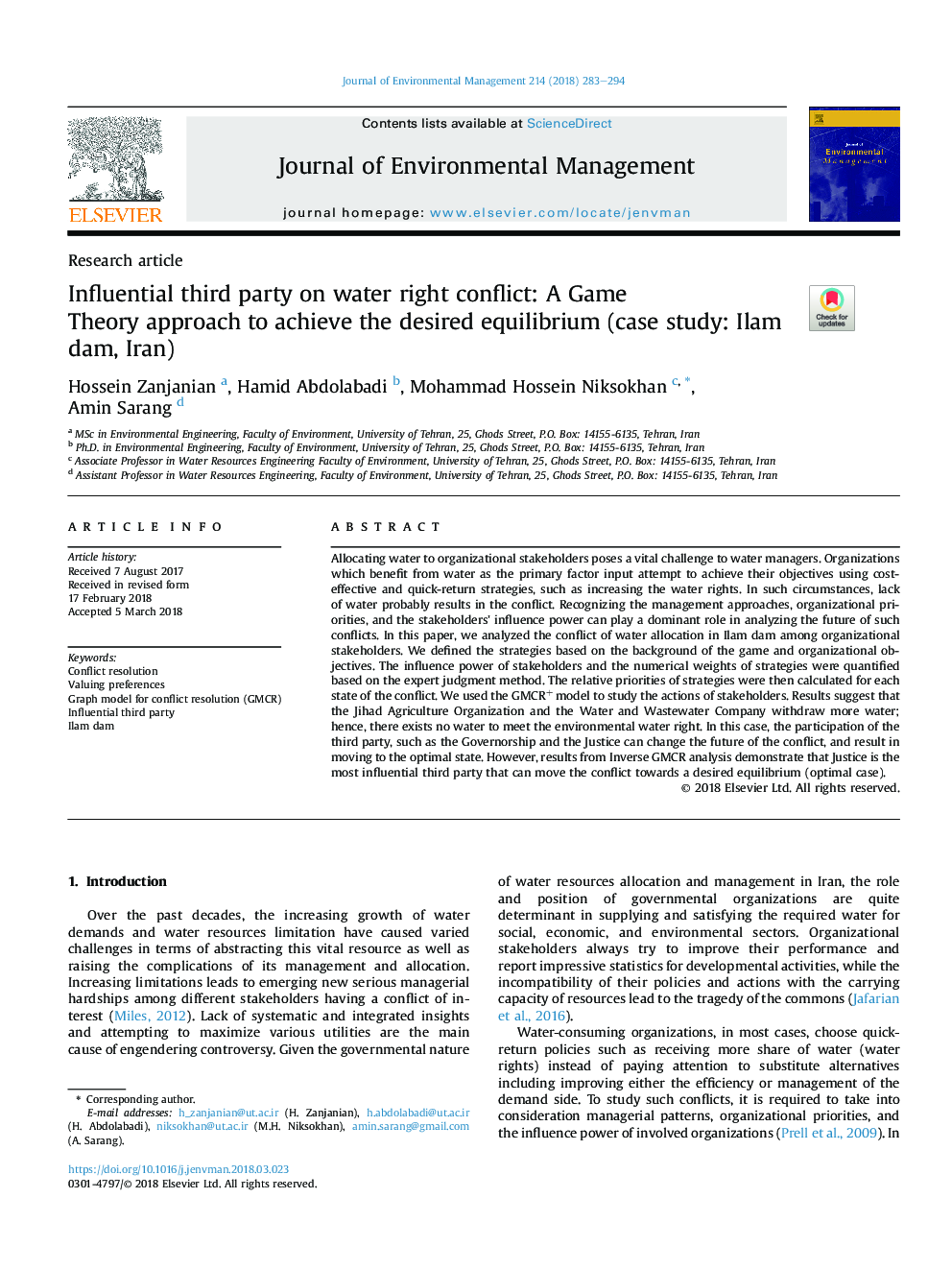| Article ID | Journal | Published Year | Pages | File Type |
|---|---|---|---|---|
| 7477764 | Journal of Environmental Management | 2018 | 12 Pages |
Abstract
Allocating water to organizational stakeholders poses a vital challenge to water managers. Organizations which benefit from water as the primary factor input attempt to achieve their objectives using cost-effective and quick-return strategies, such as increasing the water rights. In such circumstances, lack of water probably results in the conflict. Recognizing the management approaches, organizational priorities, and the stakeholders' influence power can play a dominant role in analyzing the future of such conflicts. In this paper, we analyzed the conflict of water allocation in Ilam dam among organizational stakeholders. We defined the strategies based on the background of the game and organizational objectives. The influence power of stakeholders and the numerical weights of strategies were quantified based on the expert judgment method. The relative priorities of strategies were then calculated for each state of the conflict. We used the GMCR+ model to study the actions of stakeholders. Results suggest that the Jihad Agriculture Organization and the Water and Wastewater Company withdraw more water; hence, there exists no water to meet the environmental water right. In this case, the participation of the third party, such as the Governorship and the Justice can change the future of the conflict, and result in moving to the optimal state. However, results from Inverse GMCR analysis demonstrate that Justice is the most influential third party that can move the conflict towards a desired equilibrium (optimal case).
Keywords
Related Topics
Physical Sciences and Engineering
Energy
Renewable Energy, Sustainability and the Environment
Authors
Hossein Zanjanian, Hamid Abdolabadi, Mohammad Hossein Niksokhan, Amin Sarang,
